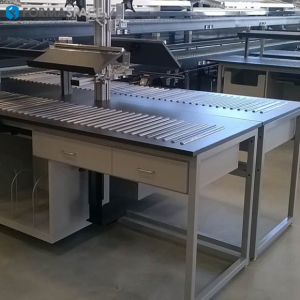Freight Forwarding Logistics Trends in 2021
Find out what are the ‘new normal’ trends in freight forwarding logistics that will be affecting your business in 2021.
Public awareness of the supply chain logistics industry has reached an all-time high during the Coronavirus pandemic as consumers stewed over supply shortages – from critically low inventories of masks (and other PPE) to toilet paper and household cleaning products.
Fortunately, the logistics industry has found an opportunity for redemption – thanks to its massive efforts to deliver Covid vaccines across the US – and across the world. The first two US-approved vaccines from Pfizer and Moderna have been especially challenging for the logistics cold chain as these two products must be kept at the equivalent of ultra-low dry ice temperatures.
2. ECommerce Boom Under Threat Of Stalling Out Due To Package Delivery Troubles
While vaccine deliveries remain a bright spot in the logistics market (for now, at least), there is major trouble brewing in the package delivery market.
Demand for home delivery has skyrocketed as more consumers have switched to online eCommerce purchases. With fewer customers coming into stores, big retailers have responded by leveraging their physical stores as local distribution centers, an omnichannel strategy known as “Buy Online Deliver From Store” (BODFS).
However, many big box stores, such as Home Depot, are facing major headwinds in pursuing efficient BODFS operations due to the unprecedented demand for package delivery, which has led to skyrocketing freight forwarding costs and excessive home delivery delays.
But fast-growing companies, such as the up-scale exercise bike manufacturer Peloton, recognize that continued delivery delays could curtail consumer demand; to the detriment of the bottom line. As a result, Peloton will invest an additional $100 million to ensure their air and ocean freight deliveries ship on time.
How did we get here?
In the next three trends, we’ll take a detailed look at how demand is outstretching supply for overseas container shipments, intermodal and truck freight forwarding, and air cargo deliveries.
3. Cost Of Overseas Container Shipments Will Continue To Rise Dramatically
Overseas container shipping has suddenly snapped back from the record low demand levels of 2020.
But the recovery, driven in part by US consumer demand for outdoor patio furniture, work from home (WFH) equipment, and other large household items, has left trans-oceanic shippers unable to meet demand.
Container availability has been a critical issue, as many shippers, faced with the cost of paying for “blank shipments” of empty containers back to Asia during mid-2020, elected to temporarily “abandon” them in Western ports (particularly in Europe), and these have been slow to return to Asian ports.
Spot rates are skyrocketing, with some customers reporting price increases of 500% or more. For example, rates to transport a 40’ container from Asia to Europe have jumped from around $1,700 to nearly $8,000 in 12 months. American importers who sell to Costco, Walmart, and Bed Bath & Beyond report that 40’ containers shipped from Asia to California have jumped from $2,500 to $6,000 or $7,000.
It may take the remainder of the year for the capacity shortage to come back into balance. As a result, economic forecasters worry that these sky-high costs for overseas cargo shipments could put a damper on a rapid post-Covid recovery in 2021.
4. Intermodal Chaos At West Coast Ports And High Spot Prices For LTL Truck Shipments
The sudden resurgence of container shipments from Asia landing at US ports (especially in the ports of Los Angeles and Long Beach) has created logistical chaos that has slowed down intermodal shipping by truck and rail across the nation.
Many cargo ships have had to wait offshore, and port directors are urging ships to dock at other West Coast ports, such as Oakland.
Why have the ports been unable to cope with the sudden renewed demand?
One theory is that too many port workers are unable to return to work due to ongoing Covid infections.
Shortages are also affecting the trucking industry, which is also struggling to meet resurging demand.
Exacerbating the problem are small trucking operators that downsized their fleets (or left the business entirely) during the height of the 2020 Covid lockdowns reduced the capacity of the freight forwarding industry significantly.
Driver training for new truck drivers also ground to a halt during 2020, which has exacerbated the ongoing shortage of truck drivers. (New drug testing regulations for drivers may also be contributing to the shortage.)
Without the ability to accurately forecast future transportation demand, many freight forwarders are turning to last-minute transportation, and that’s proving to be expensive. Demand is up over 130%, and so too are the prices for hiring a big rig, which jumped up 22%, to a new high of $2.22 per mile. Shippers are also facing other threats as well, with cargo theft on the rise.
Economic forecasters feel that these current high spot prices for LTL (Less-than-Truckload)* shipments will ultimately drive increased prices for long-term contracts for TL (Full Truckload) freight forwarding.
*Known as “groupage” in Europe.
As a result, many freight logistics operators need to plan for an extended period of high shipping costs throughout 2021.
5. Crowded Airports Struggle To Cope With Overnight Air Cargo Shipping Demands
Air cargo also hit a record low in 2020, with the worst performance since monitoring began in 1990.
Read more...
Julia Solodovnikova
Formaspace
+1 800-251-1505
email us here
Visit us on social media:
Facebook
Twitter
LinkedIn
Legal Disclaimer:
EIN Presswire provides this news content "as is" without warranty of any kind. We do not accept any responsibility or liability for the accuracy, content, images, videos, licenses, completeness, legality, or reliability of the information contained in this article. If you have any complaints or copyright issues related to this article, kindly contact the author above.


